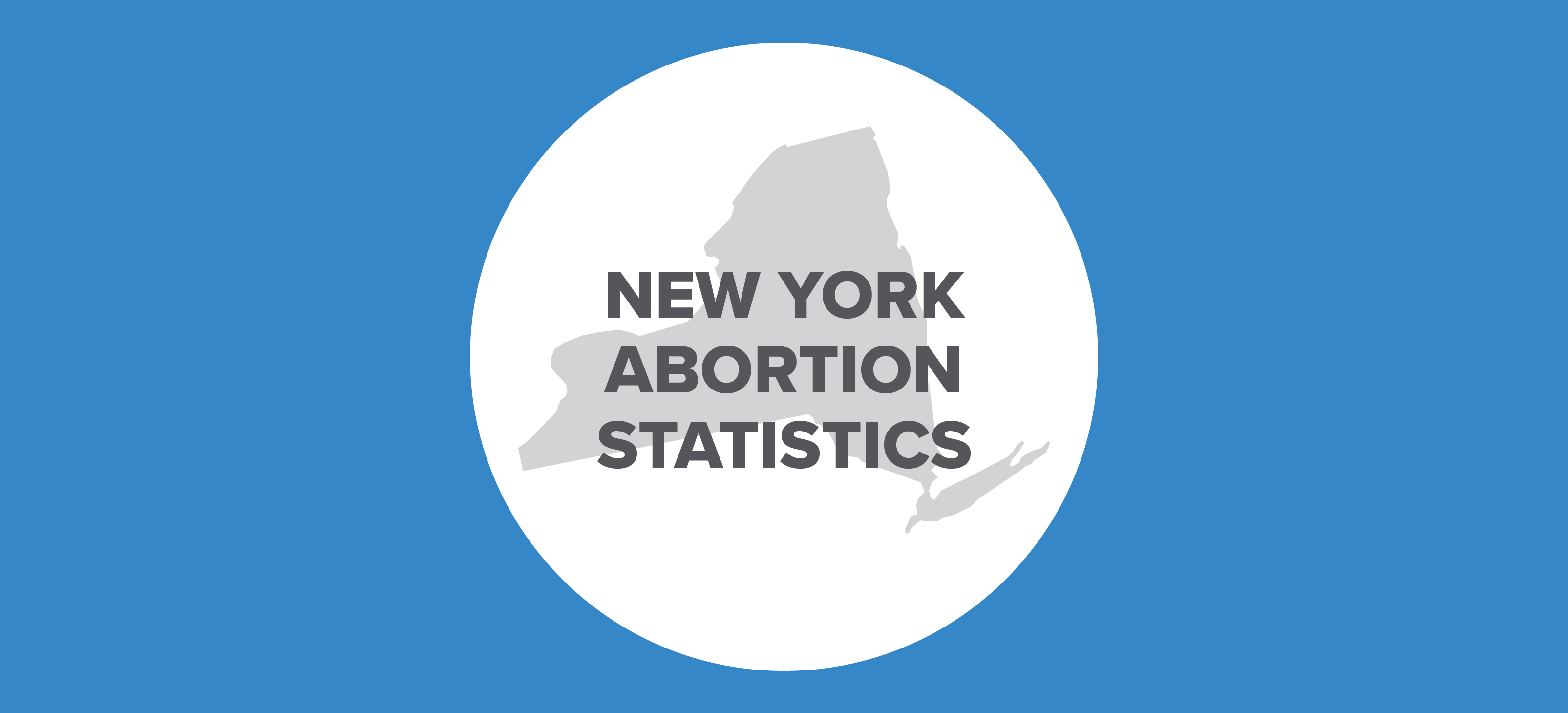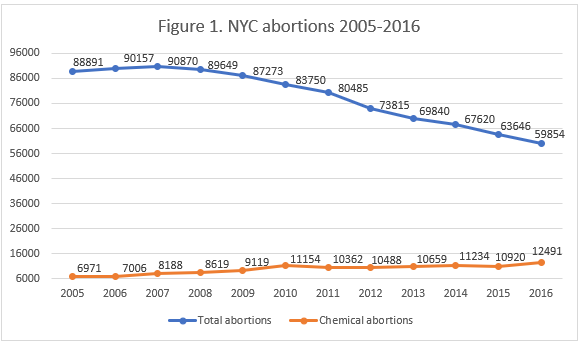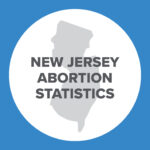Abortion Reporting: New York City (2016)

New York City has included abortion data in its vital statistics report since 1962. The city’s vital statistics report for 2016 reveals that abortion in the Big Apple is continuing to decline, although the abortion rate is still high compared to the rest of the nation.
Changes in New York City Abortions, 2015-2016

*Information on Planned Parenthood’s New York City market share is not publicly available.
Abortion Totals and Trends
Abortion has been legal in New York since 1970. In 2016, there were 59,854 abortions reported in the city. Since 1971, the first full year after abortion was legalized, New York City abortions have dropped by 70 percent. Abortion has declined by six percent from 2015, when 63,646 abortions were reported in the city. Chemical abortions continue to represent a growing percentage of New York City abortions. In 2016 there were 12,491 chemical abortions reported, a 14 percent increase from 2015, and a 279 percent increase from 2001, the first year after the Food and Drug Administration approved the use of Mifeprex as an abortion drug. During 2016, 21 percent of all abortions reported in the city were chemical abortions. New York City’s abortion rate in 2016 was 31.1 abortions per 1,000 resident women of childbearing age, down from 32.8 in 2015.
State Report Summary
A little over half of the women getting abortion in New York City – 56 percent – were between the ages of 20 and 29. Nine percent were under the age of 20, 31 percent were in their thirties, and four percent were age 40 or older. Non-Hispanic black women made up the largest group of women who obtained abortions in New York City, accounting for 39 percent of reported abortions. Hispanic women made up the second-largest racial category at 28 percent of abortions, and white women made up 15 percent of the abortions reported in the city. Three-quarters of the women were unmarried. Fifteen percent were married, and 10 percent did not report their marital status. Ninety-three percent of the abortions reported in New York City were performed on city residents.
Forty percent of the abortions reported in New York City were performed at six weeks of gestation or earlier. Thirty percent were performed between seven and eight weeks, 13 percent between nine and 10 weeks, and six percent between 11 and 12 weeks of gestation. Five percent were performed between 13 and 15 weeks, and four percent were performed between 16 and 20 weeks of gestation. There were 1,328 abortions (two percent) performed at or after 21 weeks – more than halfway through pregnancy, when babies can feel pain. Currently, New York prohibits abortion after 24 weeks unless the life of the mother is at risk. However, the new Democratic majority elected to the New York State Senate has indicated that one of its top priorities is passing the Reproductive Health Act, which would remove protections for unborn children from New York’s penal code and remove all limits on abortion. Under the Reproductive Health Act, abortion would be allowed after 24 weeks to protect the mother’s life or health, or in cases of “absence of fetal viability” (when the baby is unlikely to survive after birth). The Act does not define “health,” a term commonly interpreted in line with the Supreme Court definition in Doe v. Bolton and understood to include mental and physical health and social factors. Additionally, the Reproductive Health Act would permit licensed medical practitioners besides doctors, such as midwives, to perform abortions.
Race and Abortion in New York City
Non-Hispanic black women continue to be disproportionately impacted by abortion. In 2016, as in previous years, more African American babies were aborted than were born alive in New York City. Out of the 47,718 total reported pregnancies experienced by non-Hispanic black women, almost half – 49 percent – ended in abortion, while four percent ended in miscarriage and only 47 percent ended in live births. Among African American women in their twenties, the abortion rate was a staggering 85.2 abortions per 1,000 women. By contrast, Asian and Pacific Islander women overall had the lowest percentage of pregnancies ending in abortion (13 percent) and Asian and Pacific Islander women in their twenties had an abortion rate of 15.5 abortions per 1,000 women.
State Ranking
In a Charlotte Lozier Institute study of state abortion reporting, New York City tied for 31st best among the 50 states and the District of Columbia. More than seven percent of all abortions reported in the United States in 2014 occurred in New York City. With so many women undergoing abortions, the city would do well to improve its reporting. New York City could report additional demographic information that it already collects, such as women’s states and counties of residence, levels of education, and previous pregnancies. The city could also include information it collects on how abortions are funded and in which facilities they take place. Additionally, New York City could begin requiring abortion providers to report any complications, as well as information on the physical characteristics of the babies killed by abortion and whether any babies were viable. As the nation’s “abortion capital,” subject to an imminent expansion of legal abortion until birth, detailed abortion reporting in New York City is particularly crucial to a solid understanding of abortion in the United States.


- According to New York City’s vital statistics report, the abortion rate reflects the number of reported abortions per 1,000 resident women ages 15-44. NYC has calculated the abortion rate since 2011.
Click here to view reporting from New York State:2021202020192017

























